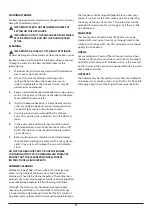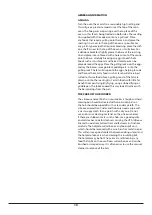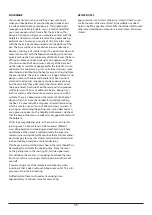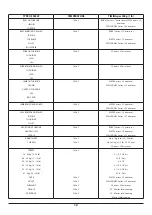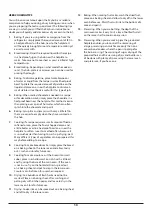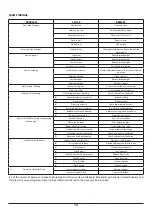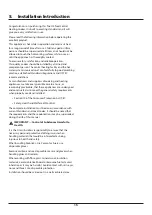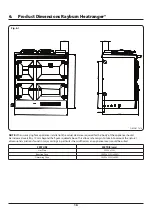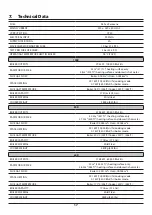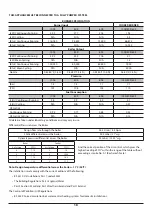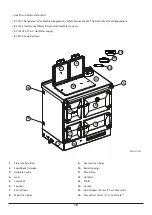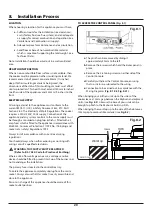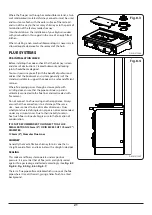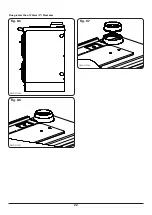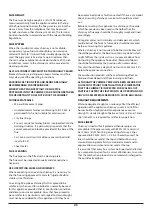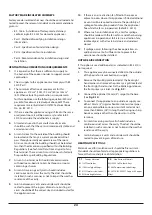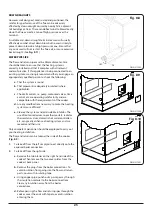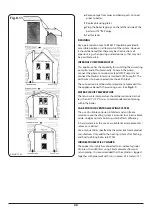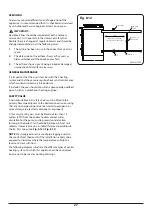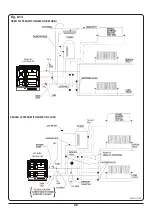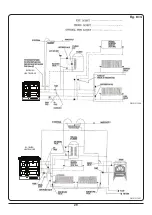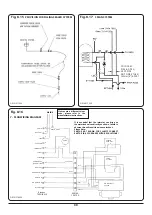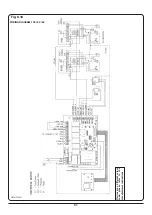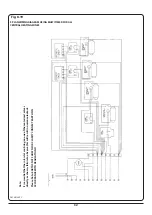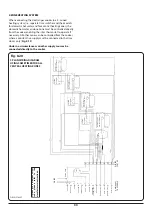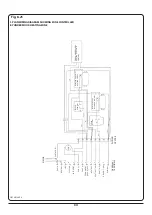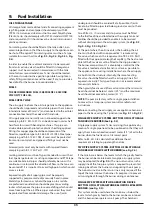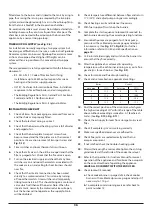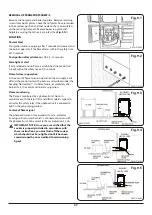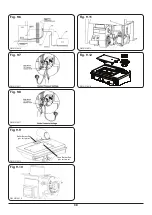
23
FLUE HEIGHT
The flue must be high enough 4.5 mts (15ft) minimum
measured vertically from the appliance outlet to the top
of the flue terminal to allow the flue gases to vent into the
clear air, away from the turbulence that may be caused
by roof structures, other chimney stacks, etc. The terminal
position should be in accordance with the relevant Building
Regulations.
FLUE SYSTEM
Where the standard masonry chimney is not available,
a proprietary type of non-combustible or non-corrosive
material 150mm (6”) twin wall fully insulated pipe may be
used. The pipe must terminate at a point not lower than
the main ridge or adjacent outside obstructions. With such
installations, access to the chimney must be provided for
cleaning purposes.
ALL FLUE CONNECTIONS MUST BE THOROUGHLY SEALED.
Blocked chimneys are dangerous, keep chimneys and flue
ways clean, read the operating instructions.
RAYBURN CAST IRON PIPES AND BENDS ARE HIGHLY
RECOMMENDED FOR INTERIOR USE.
WHERE THE APPLIANCE SPIGOT OR FLUE PIPE
PROTRUDES INTO THE CHIMNEY, CARE SHOULD BE TAKEN
TO ENSURE THAT IT DOES NOT BLOCK THE CHIMNEY.
SUITABLE MATERIALS
•
Mineral Fibre cement pipes.
•
Insulated metal chimneys conforming to B.S. 4543. (a
galvanised finish is not suitable for exterior use).
•
Clay flue linings.
•
Pre-cast concrete chimney blocks, incorporated into the
building structure. It is particularly important that the
correct connection block be provided at the base of the
flue.
•
Cast iron or acid resistant vitreous enamel lined mild
steel to B.S. 41.
•
Sheet metal.
FLUE CLEANING
The flue pipe must be fitted with a cleaning plate.
The flue must be inspected annually and cleaned when
necessary.
USE OF EXISTING FLUES AND CHIMNEYS
When connecting to an existing chimney it is necessary to
line the flue using approved 150mm (6”) rigid or flexible
stainless steel flue liner.
An existing flue pipe or chimney that has proved to be
satisfactory when used for solid fuel can normally be used
for this appliance provided that its construction, condition
and dimensions are acceptable. Flues that have proved to
be unsatisfactory, particularly with regard to down draught,
must not be considered for this appliance until they have
been examined and any faults corrected. If there is any doubt
about an existing chimney a smoke test should be carried
out.
Before connecting this appliance to a chimney or flue pipe
which has previously been used with another fuel, the
chimney or flue pipe should be thoroughly swept and lined
accordingly.
All register plates, restricter plates and dampers etc. which
could obstruct the flue at a future date should be removed
before connecting this appliance.
Where a chimney is not required to be lined a suitable void
should be provided at the base to contain any debris which
might fall from the inside wall, so as to prevent debris from
obstructing the appliance flue outlet. (Removal of debris
should be facilitated by the provision of an access door).
This void should have a depth of not less than 250mm (10”)
below the appliance connection.
The combustion products will have a descaling effect on
hardened soot deposits left from burning solid fuels.
ALTHOUGH THE CHIMNEY MAY HAVE BEEN CLEANED OF
LOOSE SOOT PRIOR TO INSTALLATION, IT IS IMPERATIVE
THAT THE CHIMNEY IS INSPECTED FOR SCALED SOOT
PARTICLES AFTER THE FIRST MONTH OF OPERATION AND
ANY LOOSE MATERIALS REMOVED TO AVOID BLOCKAGE.
DRAUGHT REQUIREMENTS
While inadequate draught can seriously effect the efficient
operation of the appliance, chimney’s over 5.4m (18ft) for
houses built on high ground can experience excessive
draught. A steady draught of between 1mm (.04) and 1.5mm
(.06) inches W.G. is required for satisfactory operation.
FLUE LINERS
Chimney’s lined with salt glazed earthenware pipes are
acceptable if the pipes comply with BS EN 1457 and must
be 150mm (6”). When lining an existing chimney, a liner
approved to BS 4543, Parts 1, 2, 3 & 4 should be used. The
liner should be secured at the top and bottom by using
closure/clamping plate firmly sealed and secured and an
approved low resistance terminal used at the top.
It is essential that every flue system be inspected and tested
by a competent person for its correct effectiveness, to ensure
that the combustion products are completely discharged to
the outside atmosphere.

